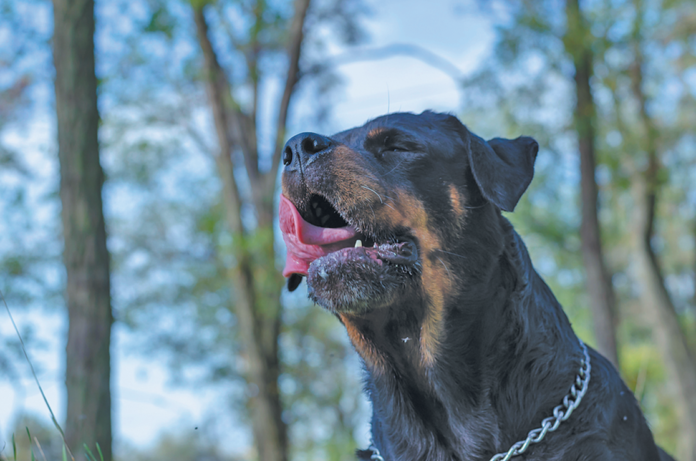During a regular sneeze, air is rapidly pushed out through the nose. But during a reverse sneeze, which sounds like loud snorting, air is rapidly pulled in through the nose. It can be very alarming to watch a dog in the throes of a reverse sneeze spasm. His head and neck will extend, and he will look extremely uncomfortable, as if he is trying to sneeze and take in air at the same time. An episode can last between 30 seconds and a minute.
Why do some dogs have reverse sneeze episodes? It’s believed they occur when the soft palate at the back of the roof of the mouth becomes irritated, perhaps by the presence of a foreign body such as a piece of dust or nasal mites. Such irritants can be further back in the airway than those that cause regular sneezing.
Household scents such as those emanating from air fresheners or perfumes may also be responsible, as can smoke. Allergies to airborne substances like pollen and overexcitement are other possibilities. Little dogs are most commonly affected, but no breed is immune.
For the large majority of dogs, a reverse sneeze now and again is nothing to worry about — as distressing as it looks. You can let it run its course or lightly stroke your dog’s neck to try to calm him. Once your pet exhales, the episode will be over and he will be completely back to himself.
When to have a veterinarian weigh in
If your dog reverses sneezes often, it’s best to have him evaluated by the doctor. There are medicines that can be administered if the dog is found to have a respiratory infection or allergies to substances in the air. You and the vet can also work backwards to see if any household scents might be causing the problem and have the offending products removed from the environment. Sometimes, an anti-inflammatory, decongestant, or antihistamine is in order.
In some cases, the doctor may perform a rhinoscopy, looking inside the nasal cavity and throat with a camera to see whether he can find nasal polyps or tumors that are causing the reverse sneezing — and treating or removing them as needed. Foreign material, such as a twig or blade of grass, may also be found.
But such problems are rare. Usually reverses sneezes come and go as just temporary nuisances.





